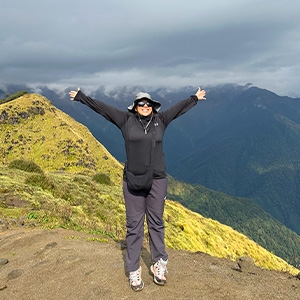History of Maha Shivaratri
Maha Shivaratri has a long history in Nepal, dating back thousands of years to the ancient Hindu civilization. According to Hindu Mythology, Maha shivaratri is the night that Lord Shiva is said to have performed the "Tandava Nritya," which is a Cosmic Dance that represents the cycle of creation, preservation, and destruction in the world. Maha shivaratri has been celebrated in Nepal for generations, and the festival has become an important part of the country's Cultural and Spiritual History.
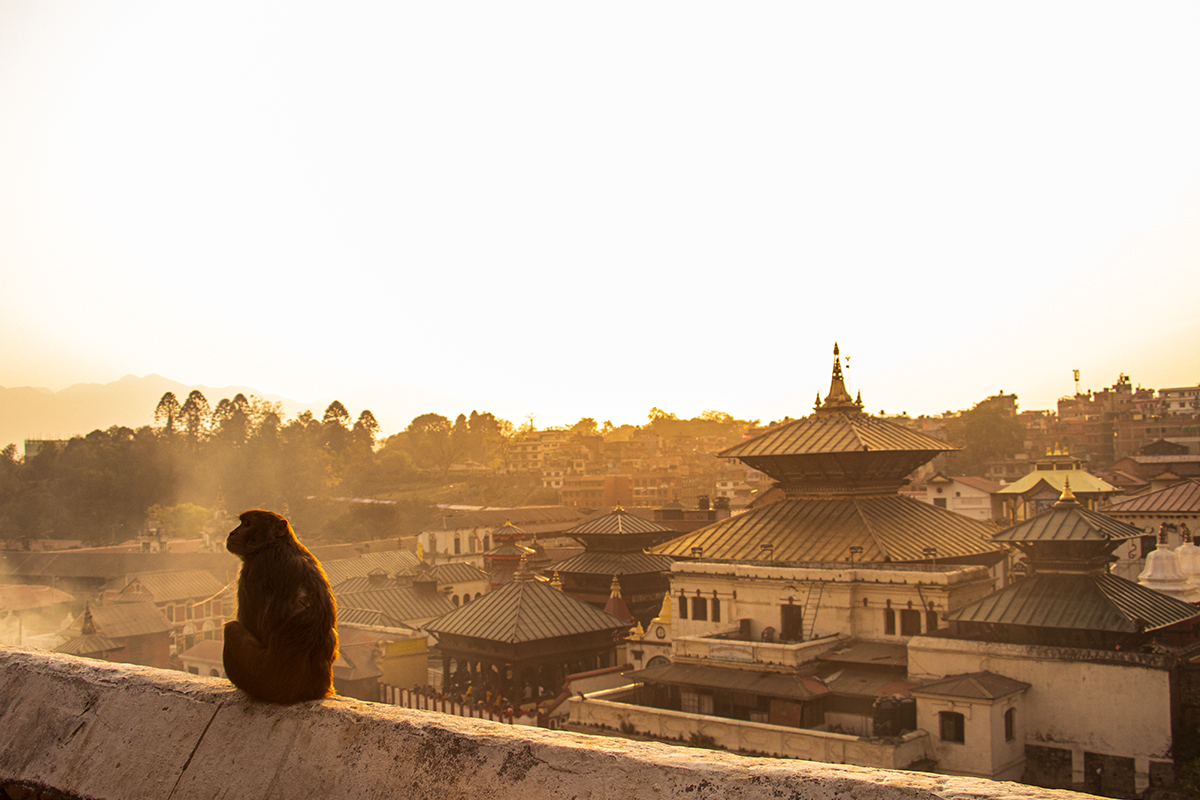
The festival is particularly significant in Kathmandu, as it is there that thousands of devotees gather to celebrate at the Pashupatinath Temple, which is considered to be one of the Holiest Temples in the World and is dedicated to Lord Shiva, in order to Perform Rituals and give Prayers. Even though Maha shivaratri has developed over the centuries and adapted to shifting cultural and social conditions, the Fundamental Rituals and Beliefs that are associated with the celebration have stayed virtually the same. The Hindu Population in Nepal continues to show Great Devotion and Passion when they celebrate Maha shivaratri, making it one of the Most Important Festivals in Nepal even in the modern era. In general, the History of Maha Shivaratri in Nepal is Reflective of the Permanence and Adaptability of Hindu Beliefs and Practices in spite of the Evolution of time and the emergence of new Situations and Environments.
Religious Importance of Maha Shivaratri
Maha Shivaratri is regarded as one of the Most Important Hindu Festivals and is celebrated with High Respect in Nepal. The Hindu Devotees gather in Pashupatinath Temple -The Holy Temple, during this Festival to Pray, Meditate and Carry Out Rituals in Honor of Lord Shiva, one of the Most Respected Gods in Hindu Mythology. This Hindu Festival is viewed from a Religious Perspective as an opportunity for followers to Achieve Spiritual Freedom and Purification. On this day, Devotees observe a Fast and Engage in Acts of Devotion and Worship, such as Praying, Performing the "Rudra Abhishek'' Puja, and Reciting the Shiva Purana and other sacred texts. Many Hindu Devotees embrace this festival, which is also seen as a time of Spiritual Rejuvenation, to reflect on their life and make plans to strengthen their Spiritual Well Being. On this day, Lord Shiva is thought to be more kind and more inclined to grant the wishes of his Devotees.
Maha Shivaratri is also celebrated as a time for Community and Unity, and it serves as a Chance for Hindu Believers to join together and strengthen their ties to one another. This Holy Festival serves as a reminder of the value of Devotion and Spirituality in daily life and is a Celebration of the Principles and ideals that make up the Hindu society. It is impossible to underestimate the Sacred Significance of Maha Shivaratri in Nepal. A time for Spiritual Rebirth, Community Development, and the expression of Devotion and Worship, the Festival Honors one of Hinduism's most adored deities.
Myths and Legends of Maha Shivaratri Festival
Maha Shivaratri is a Significant Hindu festival celebrated in Nepal, which falls on the 14th day of the dark fortnight in the month of Falgun according to the Nepali calendar. The festival is celebrated to honor Lord Shiva, one of the principal deities of Hinduism. According to Hindu Mythology, there are many stories related to the Origin and Significance of Maha Shivaratri. One Popular Legend tells the story of a hunter named Suswara, who accidentally Worshiped Lord Shiva while looking for prey in the forest. As he was wandering in the forest at night, he became tired and took a rest under a Bilva tree. Without realizing that the tree had a Shiva Lingam beneath it, he spent the whole night Chanting the name of Lord Shiva and offering Bilva leaves to the Lingam. As a result of this Unintentional Worship, Suswara was blessed with Wealth and Knowledge. This considered one of the top Legends of Maha Shivaratri Festival.
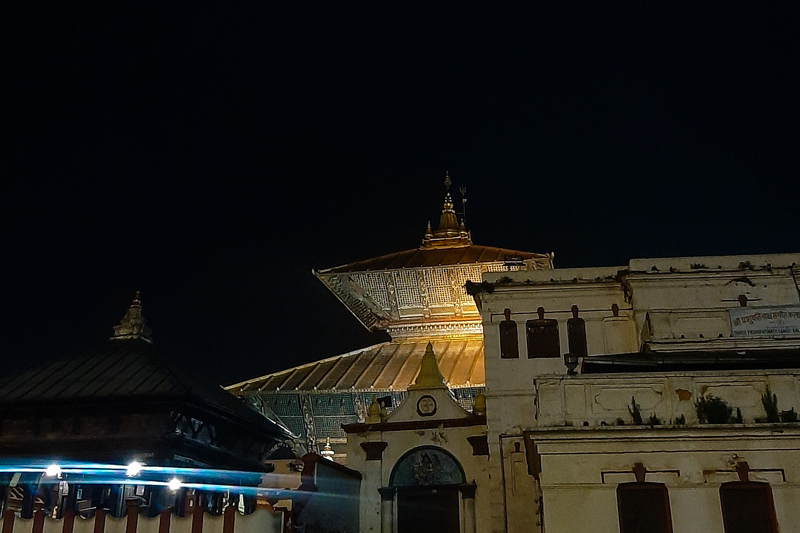
Another Popular Legend associated with Maha Shivaratri is the story of the Churning of the cosmic ocean by the Gods and Demons. During this Churning, a pot of Poison Emerged, which could destroy the world. Lord Shiva Drank the Poison to Save the World and Prevent its Destruction. As a result, his Throat Turned Blue, and he came to be known as "Nilkantha." In Pashupatinath Temple, located in Kathmandu, the capital city of Nepal, one of the Holiest Shrines dedicated to Lord Shiva, thousands of Devotees gather from different parts of the country to pay homage to Lord Shiva. During the Festival, the temple remains open all night, and many Sadhus, or Holy Men, Perform Rituals and Prayers to please Lord Shiva. Many people also stay awake throughout the night and perform Jaagran, which involves Reciting Prayers, Singing Bhajans, and Meditating.
This Holy Festival is rich in Myths and Legends, and it is believed to Cleanse one's Sins and Grant Blessings and Fulfillment of Wishes. It is a time when Devotees gather to express their Devotion to Lord Shiva through Fasting, Prayer, and Meditation.
Things You Can Do During Maha Shivaratri in Pashupatinath Temple
The Pashupatinath Temple, which is located in Kathmandu, Nepal, is considered to be one of the Holiest Shrines Dedicated to Lord Shiva. At the time of the Maha Shivaratri Festival in Nepal, the Temple is visited by a Large number of Devotees coming from all across Nepal and India. The following is the list of things that you can participate in at the Pashupatinath Temple during the Holy Festival, Maha Shivaratri:
Attend Maha Shivaratri Puja
A very Important Part of the Maha Shivaratri Festival in Nepal is Attending the Maha Shivaratri Puja. This Puja involves Performing Special Rituals and Prayers throughout the Day and Night to seek the Blessings of Lord Shiva. The Maha Shivaratri Puja is usually held in Temples dedicated to Lord Shiva, and involves reciting Mantras, performing " Rudra Abhishek" Puja (bathing the Shiva Lingam with water, milk, and other items), and Offering flowers, fruits, and other items to Lord Shiva. Devotees often Fast during the day and night and attend the Puja to seek the blessings of Lord Shiva for Peace, Prosperity, and Well-Being. The Maha Shivaratri Puja is considered to be one of the Most Auspicious and Important Pujas in the Hindu calendar.
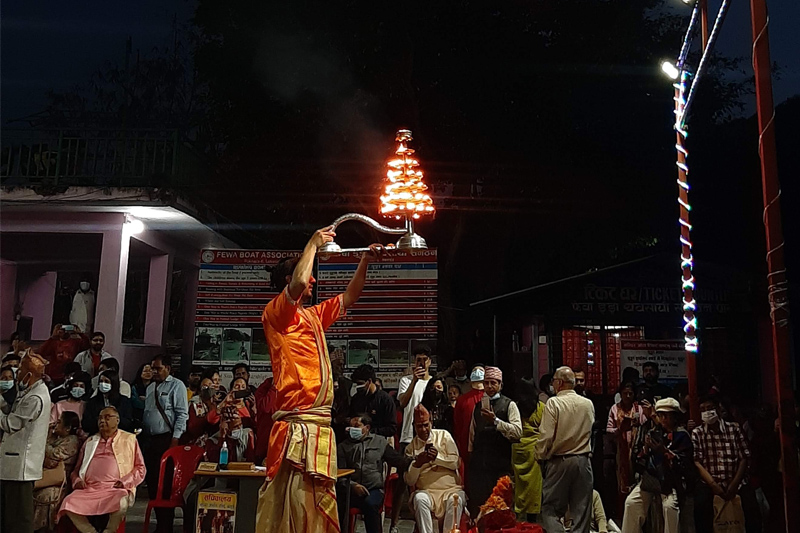
Perform Jagran
Performing Jagran, or a Night Long Celebration with Bhajan and dances, is a common practice during Maha Shivaratri. It is believed that Staying awake throughout the night and performing prayers and rituals can help one to attain the blessings of Lord Shiva. During Jagran, devotees often Recite Prayers and Mantras, Perform “Rudra Abhishek" Puja, and offer flowers, fruits, and other items to Lord Shiva. Many temples like Pashupatinath organize Jagran programs during Maha Shivaratri, where devotees can participate in the rituals and seek the blessings of Lord Shiva. Jagran is considered to be a Powerful Spiritual Practice that can help one to purify the mind, body, and soul, and attain the blessings of Lord Shiva.
As the night of Shivaratri, marks the union of Shiva and Shakti, the night of Shivaratri is also the time when Lord Shiva is said to have performed the "Tandav," also known as the Cosmic Dance. Tandav is the Heavenly Cosmic Dance of Creation, Preservation, and Destruction. All night long, Devotees pray for the victory of light over darkness while reciting the mantras "Om Namah Shivaya" and "Mahamrityunjaya" (which translates to "Great Death-Conquering Mantra").
Meditate
Meditation is a Powerful Spiritual Practice that can help one to connect with their inner self and attain a sense of Peace and Tranquility. During Maha Shivaratri, Meditation is often practiced as a means of seeking the blessings of Lord Shiva. To meditate, you can find a quiet and comfortable place where you can sit without any Disturbance. You can close your eyes and focus on your breath, or Recite Mantras or prayers- "Om Namah Shivaya" and "Mahamrityunjaya" (which translates to "Great Death-Conquering Mantra") dedicated to Lord Shiva. Meditation can help you to calm your mind, reduce stress and anxiety, and increase your sense of well-being. It can be practiced at any time and is a Powerful Way to seek the blessings of Lord Shiva and attain Spiritual Enlightenment.
Attend Sandhya Arati
Attending the Sandhya Arati is an Important Aspect of the Maha Shivaratri Festival. The Sandhya Arati is a Daily Ritual performed in many Hindu Temples during twilight hours. It involves Offering Prayers, Chanting, and Lighting Lamps to Lord Shiva and other deities. During Maha Shivaratri, the Sandhya Arati is usually performed Multiple Times throughout the day and night. The Sandhya Arati involves Chanting Mantras, Performing Abhishekam, and offering flowers, fruits, and other items to Lord Shiva. It is believed that attending the Sandhya Arati during Maha Shivaratri can help one to attain the blessings of Lord Shiva and bring peace, prosperity, and well-being. Many devotees consider attending the Sandhya Arati to be an Important Part of their Maha Shivaratri celebrations. You can also Attend Sandhya Arati on other days during twilight hours which is also the best time to visit Pashupatinath Temple.
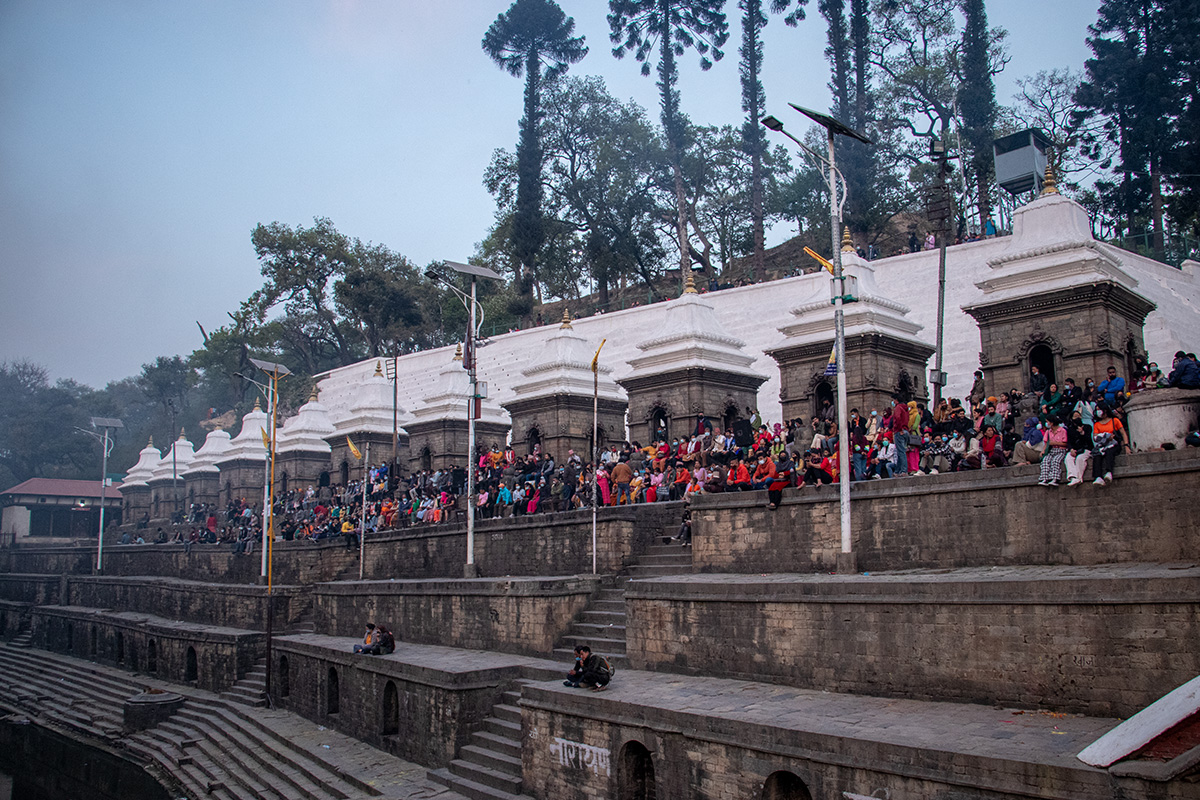
Offer Honey and Milk in the Shiva Lingas
Offering Milk and Honey to the Shiva Lingam is a ritual that is Commonly Performed during the Maha Shivaratri and other Festivals dedicated to Lord Shiva. It involves pouring fresh milk over the Shiva Lingam, followed by offering a few drops of honey. The milk symbolizes purity and is offered to purify the soul, while the honey represents the sweetness of life and is offered to seek the blessings of Lord Shiva. The ritual is performed after Reciting Prayers and Mantras dedicated to Lord Shiva, and is believed to bring peace, prosperity, and well-being.
Traveler Tips for Shivaratri Festival in Pashupatinath Temple
- Shivaratri is an Important Hindu festival that is celebrated Annually in the Pashupatinath Temple in Kathmandu, Nepal. It is a Major Festival that draws a large number of Devotees and Travelers from Nepal and India. Here are some Tips for Travelers who are Planning to Visit the Pashupatinath Temple for Shivaratri Festival:
- As Shivaratri is a Major Festival for the Hindu Community and Attracts a large number of devotees which results in the temple being crowded so we Advise you to plan your trip in Advance with a Local Agency that can arrange a Professional Guide. It is very essential to plan your trip in advance including transportation, accommodations, and other logistics which can be very difficult during the festival.
- To avoid Extreme Crowds in the temple, we advise you to arrive early in the morning as the temple opens at around 3 AM and it is best to visit the temple before sunrise to experience the Morning Prayers and Rituals.
- Visitors are reminded that the Pashupatinath Temple is a Sacred Site and it is expected of you to Respect the Temple's various Customs and Traditions while you are in the temple. It is essential to follow the rules and regulations that have been established by the temple Authorities.
- You also must be very careful about securing your valuables inside the temple as the temple will become very crowded. It is also recommended to wear a mask and carry a hand sanitizer within yourself.
- It is Very Important for you mustn't forget that possessing illegal substances like Marijuana is Prohibited in Nepal. Although the use of Marijuana during the Shivaratri Festival in the Pashupatinath Area is Strictly Forbidden. Therefore, it is best to avoid the use of it and enjoy the festival and the temple's Spiritual Atmosphere in a Safe and Respectful way.
Frequently Asked Questions
When is Shivaratri Celebrated in Nepal?
The Festival of Shivaratri is held on the day of the new moon during the month of Falgun, which occurs either in the months of February or March. The Maha Shivaratri Festival will take place on February 18 of this year (Saturday).
Where is Shivaratri Celebrated in Nepal?
Shivaratri is celebrated in Nepal at various temples dedicated to Lord Shiva, but the Most Popular and Holy Place for the Shivaratri celebration is the Pashupatinath Temple in Kathmandu. The Hindu Devotees gather in Pashupatinath Temple-The Holy Temple, during this Festival to Pray, Meditate and Carry Out Rituals in Honor of Lord Shiva, one of the Most Respected Gods in Hindu Mythology. Here is the guide to reach Pashupatinath Temple.
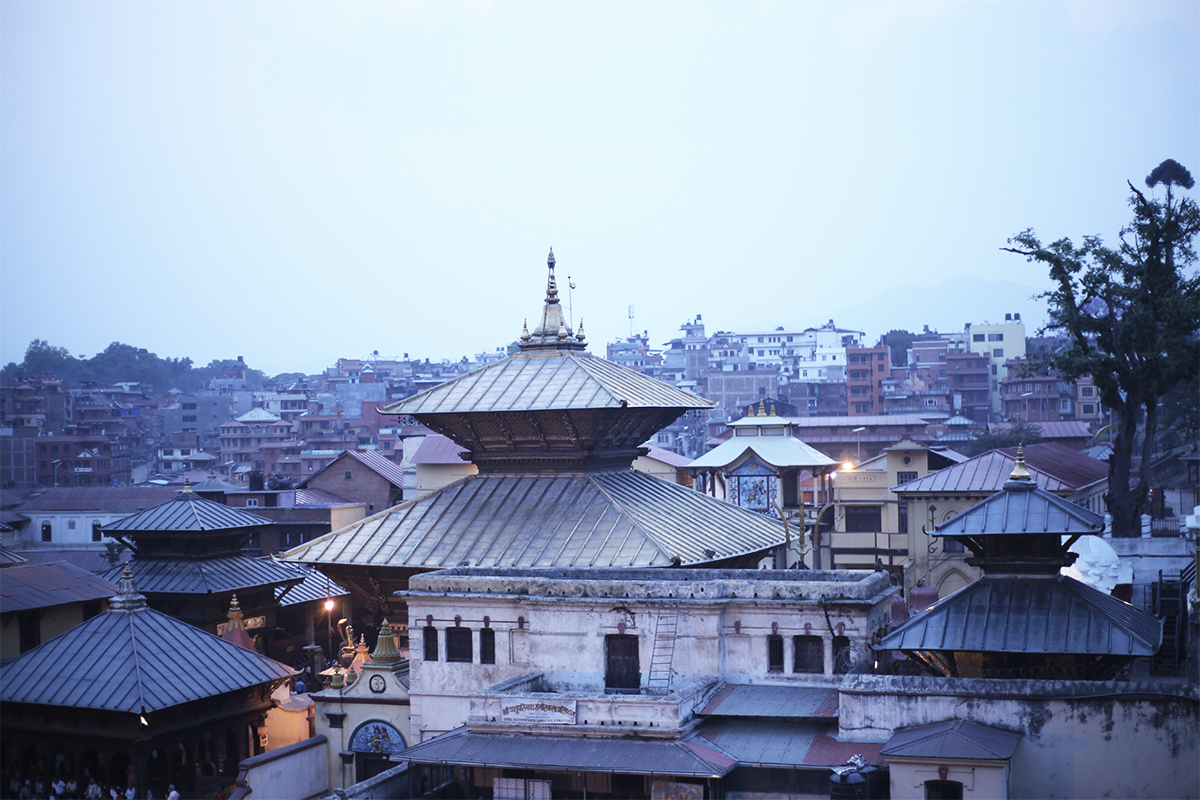
How is Shivaratri Celebrated in Pashupatinath Temple?
Pashupatinath Temple puts on an amazing show for Shivaratri, which is known for its Devotion and Energy. The temple is visited by thousands of Devotees from Nepal and India each year in the hopes of receiving Lord Shiva's blessings. Devotees come to the temple at all hours of the day and night to participate in unique religious rites and offer up prayers. The temple is decorated with lights and flowers. The Primary Rite consists of Performing "Rudra Abhishek" Puja on the Shiva Lingam using milk, honey, water, and other components and offering Lord Shiva flowers, fruits, and other components.
What is the Story Behind Shivaratri Festival?
According to Hindu mythology, the Festival of Maha Shivaratri Honors the Wedding Anniversary of Lord Shiva and Goddess Parvati. It is also thought to have been the Night that Lord Shiva performed the Tandava dance, which is a type of dance that is regarded as having powerful Cosmic Overtones. It is also believed that Lord Shiva saved the world by Renouncing his Immortality on the day of Shivaratri by consuming the Poison that was produced by the Churning of the Ocean.
How is Shivaratri Celebrated in Nepal?
Shivaratri is celebrated with Great Devotion and Enthusiasm in Nepal. In order to receive Lord Shiva's Blessings, people Fast and Engage in Special Rituals and prayers throughout the day and night. Many devotees travel to temples dedicated to Lord Shiva, such as the Pashupatinath Temple, where they carry out the Ritual of "Rudra Abhishekam" and offer Lord Shiva gifts of flowers, fruits, and other items. In addition, there are devotees who engage in the practices of Jagran and meditation in the hopes of gaining Lord Shiva's favor.
What Activities Are Performed During Shivaratri in Nepal?
Numerous rituals are carried out in Nepal during Shivaratri in order to enroll in Lord Shiva's blessing. These include offering flowers and fruits to Lord Shiva, performing "abhishekam" to the Shiva Lingam, Reciting Mantras and Prayers, Fasting, Engaging in Jagran, and Meditating.
How Crowded Will Pashupatinath be During Maha Shivaratri?
Pashupatinath Temple is the Holy Place with the biggest crowd on the day of Maha Shivaratri. This year, on the occasion of Maha Shivaratri there will be a Night long celebration, the Pashupati Area Development Trust (PADT) is expecting a crowd of 1.5 million people from across the world. For the successful Celebration of Shivaratri, the Management Unit in Pashupatinath has started cleaning the area. Also, this year More Importance has been given to figure out an easier way to manage the crowd so that devotees may perform their Puja and Darshan more conveniently. Approximately, 5,000 security personnel will be managed at Pashupatinath temple on the occasion of Maha shivaratri on Saturday.
Conclusion
Overall, Maha Shivaratri "The Great Night of Shiva" is a Major Night long celebration in Nepal, and its significance serves as a demonstration of the Hindu community's deeply ingrained Cultural and Spiritual Traditions in the country. This festival is celebrated with full joy which includes deep Devotion, Meditation, and Chanting. You can travel to Nepal in order to Experience this Festive Atmosphere that surrounds the Holy Temple- PashupatiNath during the Shivaratri Festival. During the Holy Rituals of Shivaratri, the Spiritual Energy of other people flows through you, giving you the Impression that you are among the gods. It's an opportunity that only comes around once a year, so you definitely don't want to miss the chance to witness individuals giving their total Devotion to Gods and the Powers they possess. Besides celebrating Shivaratri, here are the top 12 things to do in Kathmandu Valley.
For further information about Maha Shivaratri or any other Festivals in Nepal, leave us a message or you can directly contact us here. You can also check out our Day Tours Packages or Destinations to travel in Nepal.







